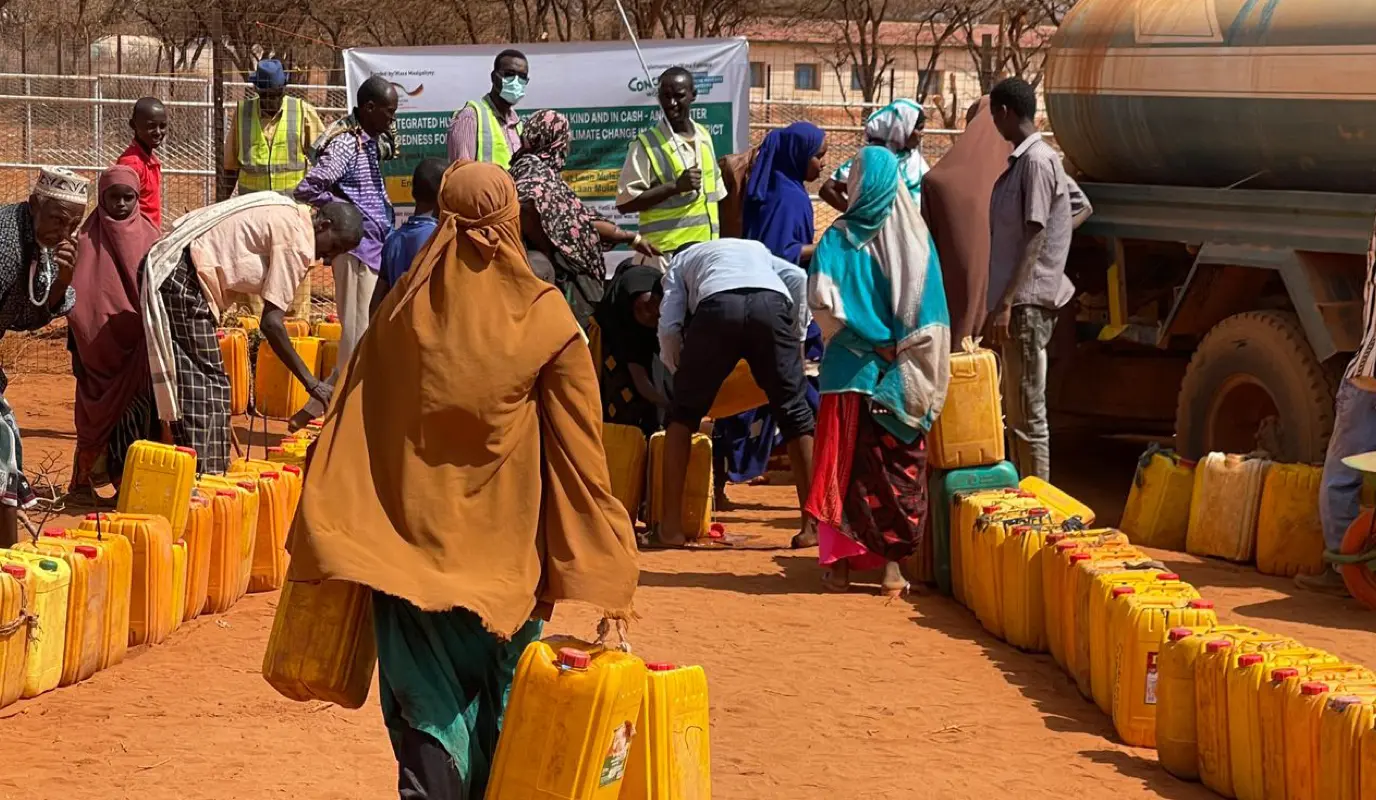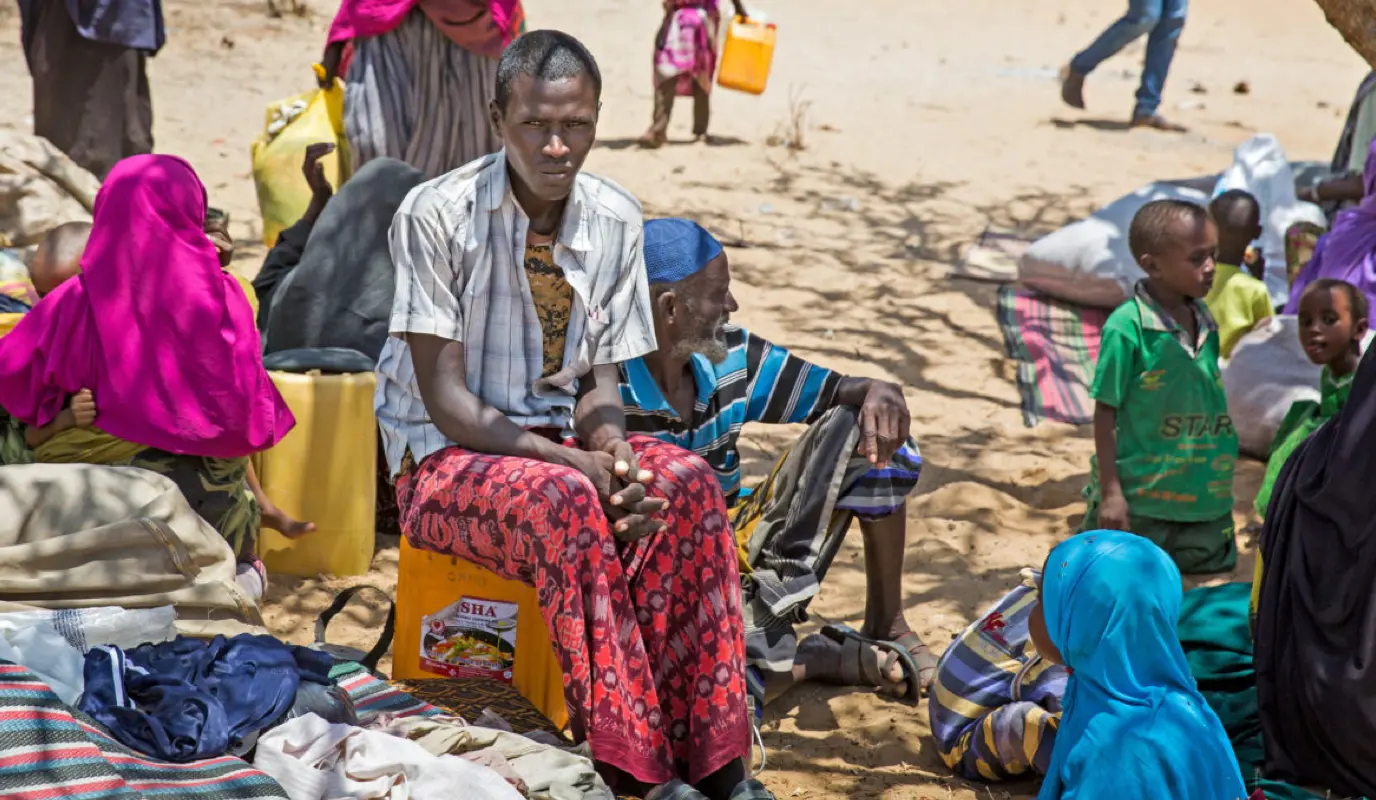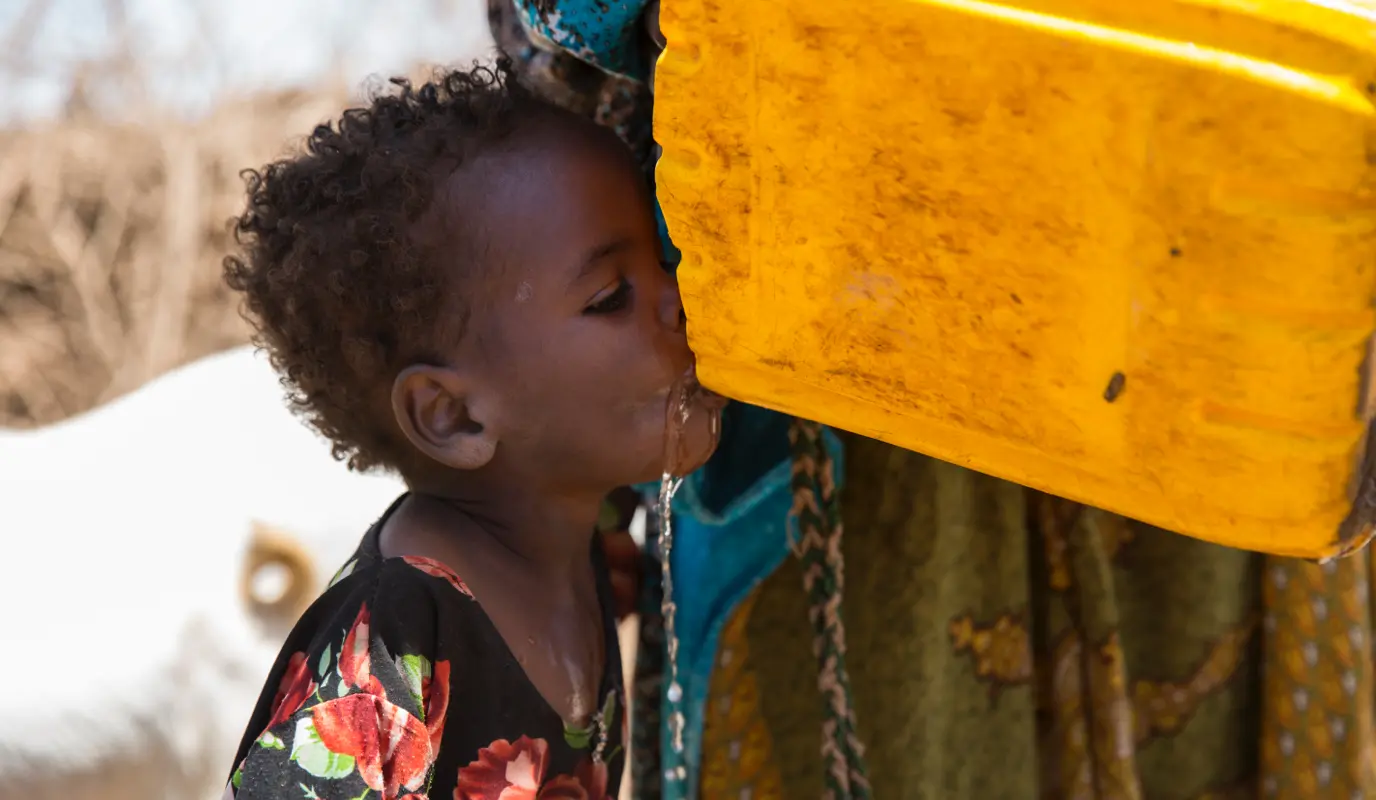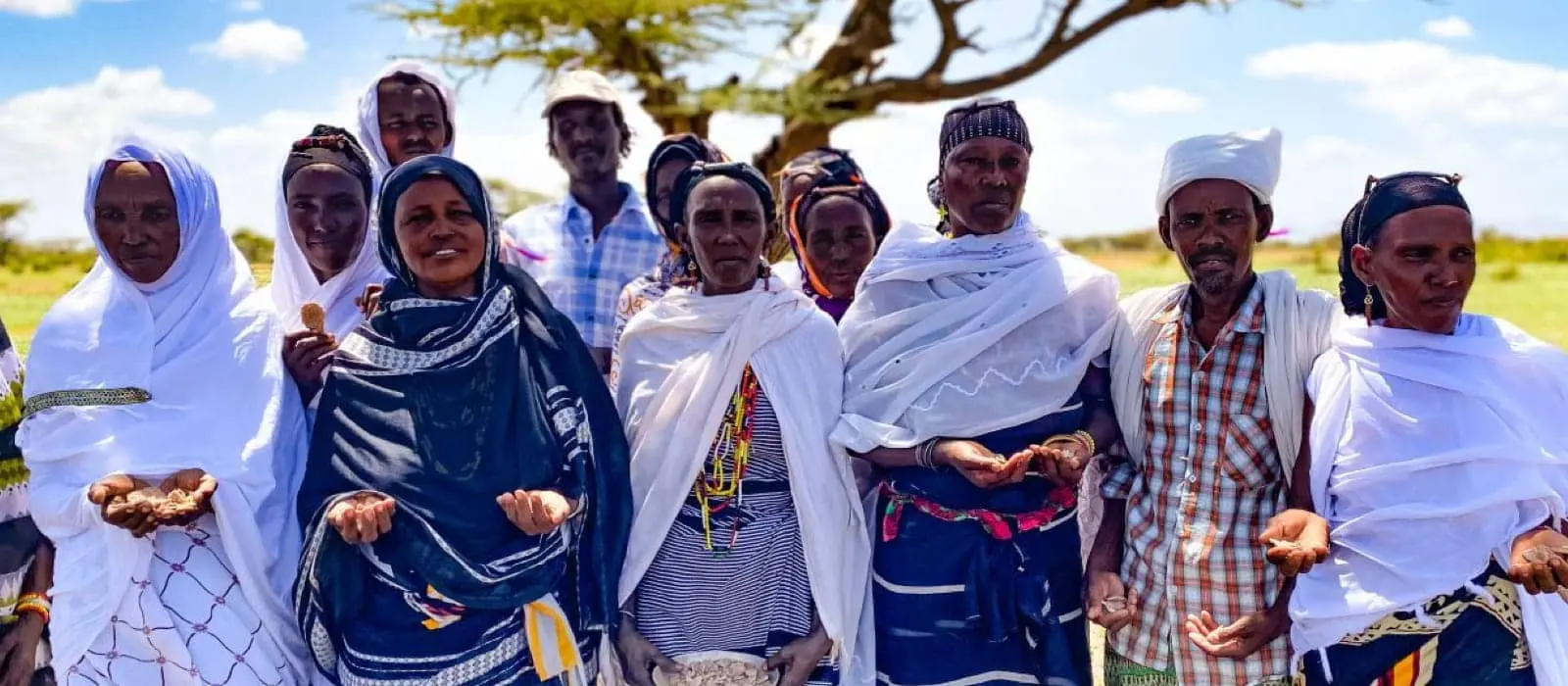Over the last 12 years, Somalia has seen three "worst drought in decades."
Somalia began the last decade with the worst drought the region had seen for decades. From there it would only get worse. In fact, since 2011, Somalia has had only one proper rainy season (in 2013) with all other years falling far short of the norm of two rainy seasons per year.
2015 saw the start of a drought that has escalated into a crisis across the Horn of Africa, one that has left tens of millions facing food insecurity and, in some cases, famine-like conditions.
A cycle of crisis in Somalia has often prevented us from getting accurate hunger data for the country, but there is significant cause for concern. In 2021’s Global Hunger Index (copublished by Concern and Welthungerhilfe), it was declared the world’s hungriest country. Violence disrupts access to food, and over 2.9 million people (nearly 20% of the country’s population) are internally displaced.
Key to many of the country’s issues today is its longstanding history of drought. Let’s take a look at how this climate disaster is becoming the country’s new normal, and how it’s left more than 40% of the country facing acute levels of hunger.

2010-11: The Worst Drought In 60 Years…
Situated in the Horn of Africa, Somalia is mostly arid, as monsoon winds lose their moisture by the time they reach the area. However, the drought of 2010-11 was of a different magnitude than those that often come in due to the El Niño weather cycle. It was the worst drought for 60 years and triggered an official declaration of famine.
2012: While Lives Were Saved, An Estimated 260,000 Were Lost
International donors and governments were slow to release funds in response to the famine declaration and this hampered the humanitarian response. While many lives were saved, an estimated 260,000 were lost during the famine between 2010 and 2012. Half of them were children under the age of 5.
Half of all lives lost during the 2010-11 drought were children under the age of 5.
2012-14: Breaking the Cycle Of Crisis-And-Response
It’s hard to understate the importance of sustained investments in medium- and long-term interventions to reduce community vulnerability in the face of food insecurity. As countries like Somalia accept that many effects of climate change are irreversible (despite the fact that they often have the least to do with causing climate change). Preventative work is the only way to get out of the cycle of crisis-and-response.
In 2011, Concern began working with farmers to rehabilitate eroded land and implement rainwater harvesting techniques so that disasters, when they strike, are minimized. In 2012, we launched our Farmer Field Schools program. Farmers like Sheikh Muhumed Dhinbil Cumar (who come from 12 or 13 generations of farmers before) were able to cultivate 50% more land, abandoning old staples like the acacia tree and shrub brush in favor of more climate-friendly crops like citrus trees, peanuts, and black-eyed peas.

2015-16: No Water, No Work
The 2015-16 El Niño events are significant in this context for setting off another period of prolonged drought. In fact, as of this writing, the late 2015 “long rains” was the last rainy season to not fall below average for the country. When the water has come, most of it races off the dry earth rather than soaking into the ground.
For a population that primarily earns money by growing crops or raising sheep, goats, and cows (selling whatever isn’t consumed for survival to cover school books, health clinic bills, and other vital costs), these low rainfalls brought chaos to families already living in extreme poverty.
2016: Seven Failures and A Nervous Wait
In March of 2016, Sheikh Muhumed Dhinbil Cumar and his neighbors waited in anticipation for rain. But once again, for the seventh straight season, their hopes would be dashed by more meager rainfall.
Some preparations were in place: boreholes drilled in places where there were ground reserves, and catchments to save water that would otherwise run away. Concern also began trucking water from boreholes to lined earth pits that, in better times, catch water for remote communities.
But the prolonged absence of adequate rainfall meant that families were still missing meals or eating less in a bid to stretch what they have in an area underserved by public services like education and healthcare. When the rains fail, young men often head to towns and cities in search of jobs. But there aren’t many opportunities for them there, because they haven’t got the right skills. Many leave behind households where a single woman looks after children and older relatives.

2017: The New “Worst Drought In Decades”
A new “worst drought in decades,” leaves more than half of all Somalis — a staggering 6.7 million — urgently in need of food assistance, and displaces over 1 million.
The situation is so severe that the entire Concern Somalia team donate 10% of their own salaries to support the effort. This money is sent by mobile phone transfers to families in urgent need. Half a million people were at immediate risk for starvation. Staff member Ambar sums it up quietly and succinctly: “They are our brothers and sisters — how can we not help?”
Fall 2017: “Long Rains” Do Nothing to Shorten Drought
The much anticipated “long” rains finally arrive at the end of 2017, but aren’t enough to make a significant difference.
By this point, the drought in Somalia has also brought with it outbreaks of cholera and diarrhea, as well as the worst measles outbreak in years — infecting some 16,000. Under normal circumstances, deaths from these illnesses can be prevented. Dehydration and hunger left many too weak to reach medical centers or fight off infections.
Somalia manages to avoid a famine in 2017, thanks to timely intervention and the use of cash transfers to support people through the hungriest months.
“They are our brothers and sisters — how can we not help?” — Ibrahim Ambar, Concern Somalia staff member
2019: Once Again Pushed “Towards a Major Humanitarian Emergency”
Ongoing climate events — combined with increases in violence and displacement — are, as UNOCHA put it, “again pushing Somalia towards a major humanitarian emergency.”
By the end of the year, 2.2 million Somalis are at high levels of food insecurity. Many pastoralists with small herds who accumulated substantial debts during the 2016-17 drought continue to face large periods of food gaps as a result. Other families are left to cope with further losses in the second half of the year, when flooding in the Juba and Shabelle rivers affects just over half a million people. In mid-2019, the United Nations predicts that Somalia will see a 40% increase in hungry households compared to the beginning of the year.

2020-21: COVID and Locusts Complicate Recovery
Two additional challenges begin the new decade: Crops are devastated by that year’s desert locust invasion, and the economy struggles in the face of COVID-19 related shutdowns and inflation.
The country also begins to face another string of failed rains, with the Food and Agriculture Organization reporting conditions similar to those in 2017 at the end of 2021. Over 3.2 million people in 66 of Somalia’s 74 districts are affected by the latest drought. Over 169,000 leave home in search of water, food, and pasture.
“Without a scale up of humanitarian assistance, an estimated 3.8 million people across Somalia will face severe forms of acute food insecurity through January 2022, rising to 4.6 million people by May,” warns UNOCHA.

2022: The Third “Worst Drought In Decades”
Amid deteriorating conditions, Concern’s Regional Director for the Horn of Africa, Amina Abdulla echoes UNOCHA’s caution in an address to the UN Security Council: “We need to scale up to prevent the situation from deteriorating further, or else we will surely not be able to cope with the numbers who will need assistance in the coming months.”
Despite years of such warnings and appeals from humanitarian leaders and experts, however, funding for the Horn of Africa drought response — which has also affected Ethiopia and Kenya — fall far below the mark through most of this year. By the summer of 2022, Somalia’s response fund is just 27% funded.
While Concern and other agencies in the area take action in 2021 and continue to do so, the international community does not respond in kind. “Sadly, we have now reached a point where what will shock us or get our attention are images of emaciated babies and animal carcasses,” says Abdulla “And that — I am sorry to say — is utterly repugnant.”
“Sadly, we have now reached a point where what will shock us or get our attention are images of emaciated babies and animal carcasses. And that — I am sorry to say — is utterly repugnant.” — Amina Abdulla, Concern Regional Director, Horn of Africa
2023: Looking Ahead
Famines are declared by governments, and Somalia’s has yet to do so. Some regions currently meet the criteria. Yet, even if they do not declare famine this time, UNOCHA writes that: “given the large number of people affected and the likely duration of the crisis, excess mortality during this drought could be as high as in 2011.”
“Where drought leads, hunger is never far behind,” adds Concern Somalia Country Director Abdi Rashid Haji-Nur. Between COVID, the locust invasion, violence, drought, and the impact of the conflict in Ukraine (which is one of the main suppliers of wheat and grain to countries like Somalia), the most vulnerable Somalis are paying the highest price. In 2022 alone, the cost of a food basket went up by 36%.

It’s already anticipated that the early rains in 2023 will also fall below expectations. However, Abdula notes that Concern is preparing for this, planning a long-term recovery response to cover the rest this year and next. “We need to protect lives and assets and help communities prepare for the next rainy season in April 2023.”
The success of these initiatives will depend in part on finances. Funds are desperately needed to roll out infrastructural projects that mitigate the worst effects of the region’s new normal of erratic weather patterns, droughts, floods, uncertain planting dates, and shorter growing periods. Without a long-term commitment that focuses on the root causes of hunger and malnutrition, history can — as we have seen over the last 12 years — repeat itself.

